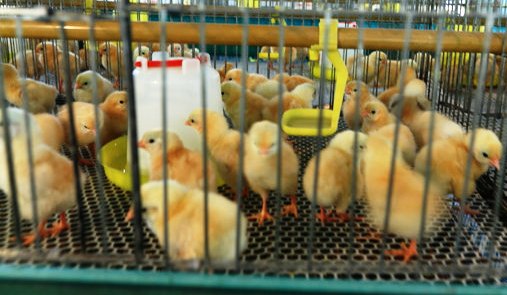Homerange, a traditional chicken company that specializes in the sale of KALRO improved kienyeji chicken is selling vaccinated chicks at Sh200.
“We provide farmers with subsidized three old vaccinated chicks at Sh200, and later buy the meat and eggs when the chicken mature at five months,” said Ian Mutwiri, the CEO of Homerange.
Homerange offers free project set up advice and consultancy to enable the farmer plan properly for in an efficient manner.
Ian says that a poultry stock of 200 chicken for instance has a production cost of Sh90,000 but comes with a sales income of Sh170,000. In this a farmer rakes in Sh80,000 in profits.
Once a farmer joins out-growers program he or she will get access to affordable poultry feeds, beginners’ comprehensive training and capacity building, support and advice during the chicken rearing process.
A 50kg bag of Kienyeji chicken mash costs Sh2279, growers’ mash 50kg goes for Sh2090 and layers mash for Sh2125.
Related content
Automatic poultry drinkers minimize destruction on chicken and vaccination costs for farmers
Farmer earns Sh100,000 a month from selling pig, cow and chicken feeds
Government gives free chicks to women moving them from illicit brewers to chicken keepers

One day old chicks. Courtesy
“For us to purchase produce from farmers, an interested farmer has to register with us by sending a short message with the word ‘OUTGROWERS’ to the number 0727200116, the system will then guide the applicant through the entire registration process,” said Ian Mutwiri, the CEO of the company.
The average price in buying the chicken is Sh650 and eggs are Sh10 each but the price may vary depending on negotiation with the farmer.
According to Ian, the plan to sell chicks when they are three weeks old is to ensure that the farmers receive well grown chicken that is past the delicate stage that day old chicks are at.
According to Zootecha International, the agriculture sector in Kenya contributes 25 per cent to the country’s GDP with the poultry playing a significant role representing 30 per cent of the agricultural contribution to GDP and growing at a rate of five per cent per annum.
Kenya has an estimated poultry population of 31m birds. Of these, 75 per cent consist of indigenous chicken, 22 per cent of broilers and layers and one per cent of breeding stock. The traditional chicken is mostly kept in rural areas while layers and broilers are mainly reared in the urban areas.
In Kenya, Kienyeji chicken is sold to supermarkets, restaurants and fast food branches.
















Comments powered by CComment